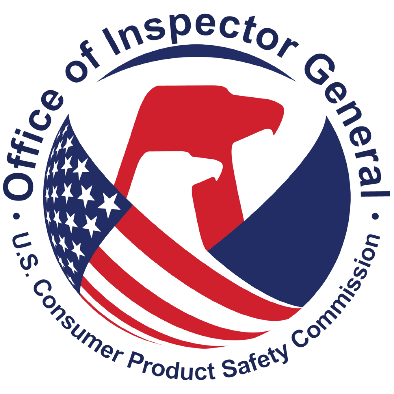Evaluation of the CPSC's FISMA Implementation for FY 2023
Open Recommendations
Implement registration and inventorying procedures for the CPSC’s information systems.
Develop, document, and implement a process for determining and defining system boundaries in accordance with National Institute of Standards and Technology guidance.
Develop and communicate an organization-wide Supply Chain Risk Management strategy/plan to manage the supply chain risks associated with the research, development, design, manufacturing, acquisition, delivery, integration, operations, maintenance, and disposal of the CPSC systems, system components, or services.
Develop, implement, and disseminate processes to implement Trusted Internet Connection 3.0, including updating its network and system boundary policies, in accordance with Office of Management and Budget Memorandum 19-26, Update to the Trusted Internet Connections (TIC) Initiative. This includes, as appropriate, the incorporation of Trusted Internet Connection security capabilities catalog, Trusted Internet Connection use cases, and Trusted Internet Connection overlays.
Define and document the taxonomy of the CPSC’s information system components, and classify each information system component as, at minimum, one of the following types: information technology system (e.g., proprietary and/or owned by the CPSC), application (e.g., commercial off-the-shelf, government off-the-shelf, or custom software), laptops and/or personal computers, service (e.g., external services that support the CPSC’s operational mission, facility, or social media).
Develop, implement, and disseminate an Identity and Access Management policy and procedures which are in accordance with the most recent National Institute of Standards and Technology guidance.
Develop and implement a formal strategy to address information security risk management requirements as prescribed by the National Institute of Standards and Technology guidance.
Complete an assessment of information security risks related to the identified deficiencies and document a corresponding priority listing to address identified information security deficiencies and their associated recommendations. A corrective action plan should be developed that documents the priorities and timing requirements to address these deficiencies.
Finalize and implement the Awareness and Training policy which is currently in draft.
Develop and implement an Enterprise Risk Management program based on National Institute of Standards and Technology, Enterprise Risk Management Playbook, and Office of Management and Budget Circular A-123, Section II guidance. This includes establishing a cross-departmental risk executive (function) led by senior management to provide both a departmental and organization level view of risk to thetop decision makers within the CPSC.
Implement Information Security Continuous Monitoring roles and responsibilities.
Develop mechanisms to ensure Information Security Continuous Monitoring stakeholder accountability.
Implement solutions to perform scenario analysis and model potential responses, including modeling the potential impact of a threat exploiting a vulnerability and the resulting impact to organizational systems and data.
Develop supply chain risk management procedures to ensure that products, system components, systems, and services of external providers are consistent with the organization’s cybersecurity and supply chain risk management requirements.
Develop and implement policies and procedures for maintaining a Continuity of Operations Plan and conducting organizational and system level Business Impact Analyses in accordance with current federal guidance. (e.g., National Institute of Standards and Technology Special Publication 800- 34/53, Federal Continuity Directive 1, National Institute of Standards and Technology Cybersecurity Framework, and National Archive and Records Administration guidance).
Develop, implement, and disseminate a set of configuration management procedures in accordance with the inherited configuration management policy which includes the process management follows to develop and tailor common secure configurations (hardening guides) and to approve deviations from those standard configurations.
Integrate the management of secure configurations into the organizational configuration management process.
Develop and implement policies and procedures in support of Binding Operational Directive 22-01, Reducing the Significant Risk of Known Exploitable Vulnerabilities.
Define and document a strategy (including specific milestones) to implement the Federal Identity, Credential, and Access Management architecture.
Integrate Identity, Credential, and Access Management strategy and activities into the Enterprise Architecture and Information Security Continuous Monitoring.
Define and implement the Identity, Credential, and Access Management policies and procedures.
Define and implement a process to ensure the completion of access agreements for all of the CPSC users.
Implement the CPSC’s policies and procedures for provisioning, managing, and reviewing privileged accounts.
Identify and document potentially incompatible duties permitted by privileged accounts.
Log and actively monitor activities performed while using privileged access that permit potentially incompatible duties.
Implement data encryption policies and procedures for data at rest and data in transit. This should include fully implementing the Data Loss Prevention solution.
Document and implement a process for inventorying and securing systems that contain Personally Identifiable Information or other sensitive agency data (e.g., proprietary information)
Document and implement a process for periodically reviewing for and removing unnecessary Personally Identifiable Information from agency systems.
Perform an assessment of the knowledge, skills, and abilities of the CPSC personnel with significant security responsibilities.
Establish and implement a strategy for identifying and integrating organizational risk tolerance and mission risk tolerances into the Information Security Continuous Monitoring program, and ensure the Information Security Continuous Monitoring supporting plan, policy, and procedures are updated to consider each program tier.
Update the System Security Plans to include the most up-to-date information and assess the relevant minor applications.
Update the Continuity of Operations Plan, or other documentation supporting the CPSC contingency planning efforts, to provide traceability from the statutory requirements to the Mission Essential Functions and to include all necessary information, for example: (1) a list of systems that support the Mission Essential Functions, (2) a list of systems necessary for essential supporting activities, and (3) a list of records essential for the CPSC’s continuity of operations.
Integrate documented contingency plans with the newly developed Continuity of Operations Plan and organizational Business Impact Analyses.
Test the set of documented contingency plans.

